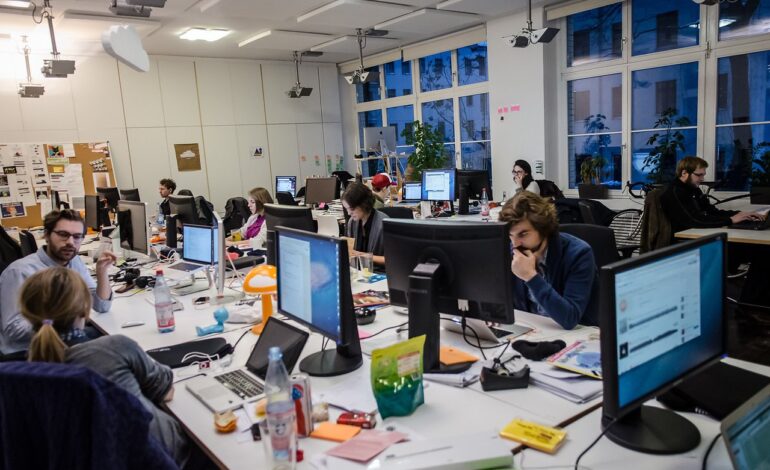How to Find Buyable Startups: A Comprehensive Guide for Investors

In the fast-paced and competitive world of startups, identifying buyable startups is both an art and a science. Whether you’re a venture capitalist, an entrepreneur, or a private equity investor, understanding how to spot promising startups poised for acquisition can lead to lucrative opportunities. However, finding these golden startups requires a strategic and informed approach.
Why Buyable Startups Are Crucial for Investors
Buyable startups are companies that are strategically positioned to be acquired by larger firms, private equity investors, or even other startups. These startups often have scalable business models, innovative products, or services, and are operating in high-growth industries that attract external interest. Acquiring such startups allows investors to capitalize on the innovation and hard work already put in by the founders, often providing high returns on investment.
In today’s business environment, startups with high buyability are a prime target for companies seeking growth through acquisitions. For investors, identifying these companies early can result in significant financial windfalls when a larger entity makes an acquisition offer. Hence, being able to spot a buyable startup early is one of the most valuable skills for any investor.
Key Indicators of a Buyable Startup
Spotting a buyable startup isn’t just about gut feeling. There are tangible factors that indicate whether a startup is poised for acquisition. By paying attention to these key indicators, you can better assess whether a company has the potential to be bought out.
- Scalable Business Model: A startup that can grow quickly and efficiently, without requiring substantial ongoing capital investment, is attractive to buyers. Scalability ensures that the company can handle rapid growth and expansion without compromising operational efficiency.
- Growing Market Demand: A startup operating in a market with increasing demand is always a better prospect for acquisition. Industries like artificial intelligence, fintech, and health tech are currently experiencing rapid growth, making startups in these sectors more attractive.
- Strong Financial Health: A startup that shows consistent revenue growth and profitability, or at least a clear path to profitability, becomes more appealing to potential buyers. Businesses with strong financial metrics tend to carry lower acquisition risks.
- Intellectual Property or Proprietary Technology: Startups that own patents, proprietary technology, or unique processes stand out. Acquirers often seek companies that can offer something unique that they can’t build in-house. These assets provide competitive advantages that are difficult to replicate.
- Experienced Management Team: An investor or buyer often looks for a strong leadership team with experience and proven track records. A capable management team reduces the risk of post-acquisition failure and increases confidence in the company’s potential for sustained growth.
Where to Look for Buyable Startups
Finding buyable startups requires a combination of research, networking, and an understanding of market trends. Here are some of the most effective ways to discover buyable startups:
- Startup Platforms: Websites like Crunchbase, AngelList, and SeedInvest are invaluable tools for discovering startups. They provide key information such as funding rounds, investor relations, and business metrics that can help you assess buyability.
- Industry Events: Attending startup events, pitch competitions, and demo days offers a direct opportunity to meet founders and evaluate businesses firsthand. Events like TechCrunch Disrupt and Web Summit are prime spots for connecting with startups early in their journey.
- Networking: Building relationships within the startup ecosystem is essential. Whether through venture capitalists, startup accelerators, or angel investor networks, staying connected allows you to hear about investment opportunities before they hit mainstream markets.
Evaluating Startup Buyability
Once you’ve identified a few startups that appear to have buyout potential, the next step is evaluation. This is where you dig into the details of the business to see if it’s truly worth pursuing.
- Financial Statements: Review the startup’s balance sheets, income statements, and cash flow reports. Healthy financials are essential, but also look for signs of scalability and future profitability.
- Growth Metrics: Look at user growth, market penetration, and the rate at which the company is expanding. Startups showing strong upward trends in these areas are more likely to attract buyers.
- Market Position and Competition: Analyze the startup’s competitive landscape. A startup in a strong market position with few direct competitors will be more attractive to buyers.
Red Flags to Avoid
When assessing a startup’s buyability, it’s also important to recognize red flags that might indicate a company is not a good buy.
- High Burn Rate: A startup with a high burn rate (spending much more money than it’s bringing in) can be risky, especially if it’s unclear how they plan to reach profitability.
- Unclear Exit Strategy: If the founders haven’t considered an exit strategy, or seem focused solely on growth without a clear end goal, it might signal that the business is not prepared for acquisition.
- Legal Issues: Startups involved in legal battles or with unclear ownership of intellectual property can be risky buys, as these issues might complicate or derail an acquisition.
The Role of Timing
Timing is everything when it comes to acquiring startups. Early-stage companies often come with high potential but significant risks, while later-stage startups may have proven their business model but come with a higher price tag. As an investor, balancing these factors and determining the right moment to invest can be the difference between a successful and a failed acquisition.
Conclusion: The Path to Startup Acquisition Success
Finding buyable startups is an art that combines experience, market understanding, and strategic foresight. By focusing on scalable business models, growing markets, and strong financials, and by using platforms, events, and networks, investors can identify startups that are primed for acquisition. With the right approach, investors can position themselves to reap the rewards of a successful startup acquisition, turning their investment into a significant profit.







